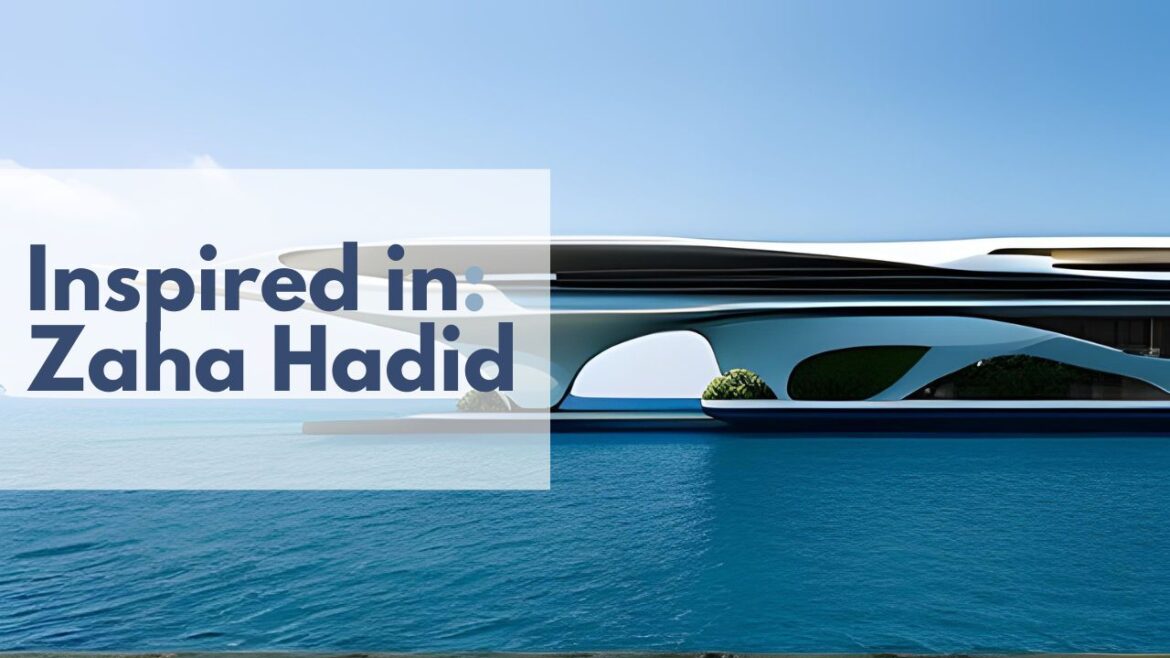Zaha Hadid A Visionary Architect Redefining Modern Design
Zaha Hadid (1950-2016) was a pioneering architect whose bold and innovative designs reshaped the architectural landscape. Born in Baghdad, Iraq, she embarked on a remarkable journey that would see her become one of the most influential architects of the 21st century.
Hadid’s architectural journey began at the Architectural Association School of Architecture in London, where she developed her unique design language. Her early fascination with the Russian avant-garde and the dynamism of modernist design played a pivotal role in shaping her visionary approach.
Throughout her career, Hadid challenged conventional architectural norms, pushing the boundaries of what buildings could be. Her designs were characterized by fluid lines, dynamic forms, and a sense of movement that defied gravity. Notable works include the Vitra Fire Station in Germany, the Rosenthal Center for Contemporary Art in the United States, and the Heydar Aliyev Center in Azerbaijan.
Hadid’s architectural prowess extended beyond buildings to bridges, museums, and even entire city masterplans. Her commitment to innovation and aesthetics earned her numerous awards, including the prestigious Pritzker Architecture Prize in 2004.
Tragically, Zaha Hadid passed away in 2016, leaving behind a legacy of architectural innovation that continues to inspire architects, designers, and creatives worldwide. Her vision for the future of architecture and her ability to transform abstract ideas into tangible structures ensure that her influence on the architectural world remains enduring and profound.
Early Life and Career
Born in Baghdad, Iraq, in 1950, Zaha Hadid’s journey to becoming an iconic architect was marked by determination and a relentless pursuit of her architectural vision. She studied mathematics at the American University of Beirut before moving to London to study architecture at the Architectural Association School of Architecture. Hadid’s early fascination with the Russian avant-garde and the dynamic possibilities of architectural design laid the foundation for her groundbreaking work.
1. Vitra Fire Station, Germany
One of Zaha Hadid’s earliest masterpieces is the Vitra Fire Station in Weil am Rhein, Germany. Completed in 1993, this building exhibits her signature style characterized by angular shapes and fluid lines. The Vitra Fire Station is a prime example of Hadid’s ability to create dynamic, unconventional spaces within the constraints of a functional structure.
2. The Rosenthal Center for Contemporary Art, USA
Located in Cincinnati, Ohio, the Rosenthal Center for Contemporary Art, also known as the Cincinnati Contemporary Arts Center, is another iconic creation by Zaha Hadid. Completed in 2003, this building’s design is a testament to Hadid’s ability to challenge architectural norms. Its striking, curvilinear form captures the essence of modern art and seamlessly integrates with the urban fabric.
3. MAXXI – National Museum of 21st Century Arts, Italy
Rome’s MAXXI Museum, completed in 2009, is a testament to Zaha Hadid’s commitment to pushing the boundaries of architecture. The museum’s fluid, interconnected spaces challenge conventional museum design, creating a dynamic environment that mirrors the evolving nature of contemporary art.
4. Heydar Aliyev Center, Azerbaijan
Perhaps one of her most famous works, the Heydar Aliyev Center in Baku, Azerbaijan, completed in 2012, is a true architectural marvel. The building’s flowing, organic form defies gravity and creates a sense of motion, resembling a wave or a billowing curtain. This design symbolizes Hadid’s belief in architecture as an art form that can evoke emotions and tell stories.
5. The Beijing Daxing International Airport, China
Zaha Hadid’s architectural prowess extended beyond art galleries and museums to infrastructure. The Beijing Daxing International Airport, completed in 2019, is an engineering marvel that combines functionality with breathtaking design. Its starfish-shaped terminal is not only visually stunning but also optimized for passenger flow and convenience.
Legacy and Influence
Zaha Hadid’s untimely passing in 2016 marked the end of an era in architecture. However, her influence continues to shape the field, inspiring architects and designers worldwide to think beyond the traditional constraints of form and function. Her work challenged conventions, redefined spaces, and pushed the boundaries of what architecture could achieve.
In conclusion, Zaha Hadid’s architectural legacy is a testament to her boundless creativity and unwavering dedication to transforming the world through design. Her famous works, such as the Vitra Fire Station, the Rosenthal Center for Contemporary Art, the MAXXI Museum, the Heydar Aliyev Center, and the Beijing Daxing International Airport, will forever stand as symbols of innovation and inspiration in the world of architecture. Her visionary approach to architecture continues to inspire future generations to dream big and reshape the world through design.
by Rodrigo Madrid


Comments (0)